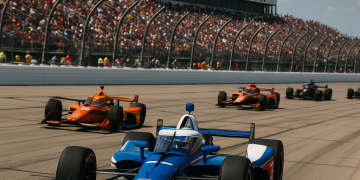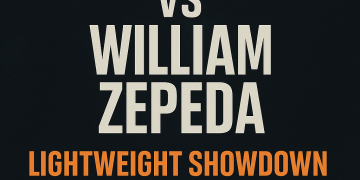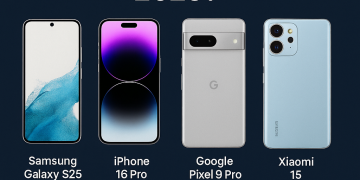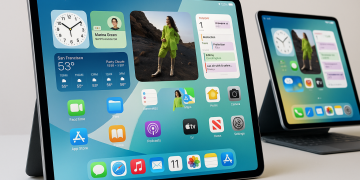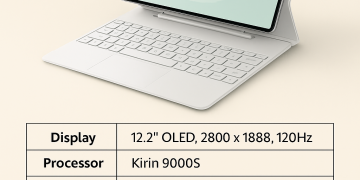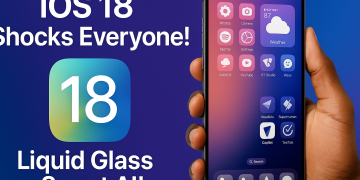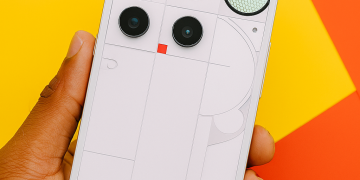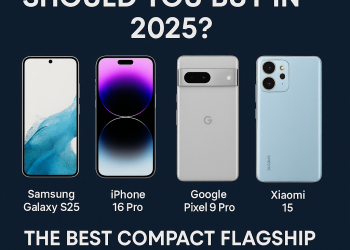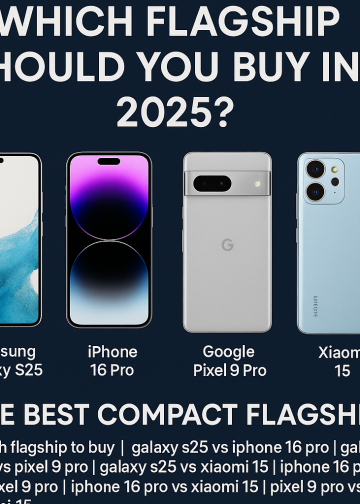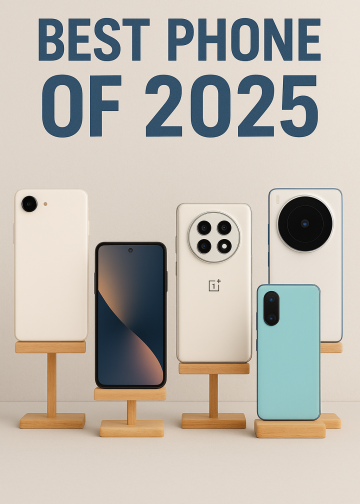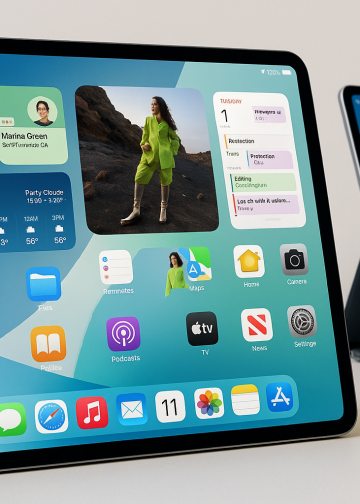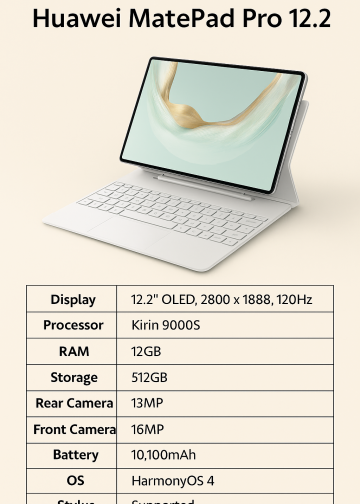Best Smartphones of 2025: A Comprehensive Mid-Year Roundup
A Powerful Introduction
In the ever-evolving world of smartphones, 2025 has already delivered an impressive lineup of devices across all budget ranges. Whether you’re hunting for the best camera phone, a powerhouse for gaming, or a reliable budget-friendly device, this mid-year roundup brings you the most exciting and noteworthy releases so far. With standout designs, next-gen performance, and thoughtful features, these phones represent the best that tech has to offer right now. So, if you’re wondering which phone deserves your attention (and maybe your dollars), this comprehensive guide has you covered.
Design and Build Quality
Smartphone design in 2025 is bolder, smarter, and more customizable than ever before. One of the biggest standouts is the Nothing CMF Phone 2 Pro, which lets users swap out colorful back panels and accessories for a touch of personal flair. It’s not just pretty, though—the updated design improves water resistance and overall durability, making it practical too.
Meanwhile, the Oppo Find N5 has turned heads with its incredibly slim profile and luxurious build quality. With a foldable form factor that feels natural in hand and premium materials throughout, it’s easily one of the most stylish phones of the year—although unfortunately, it’s hard to get outside of Asia.
On the classic side, Motorola’s RAZR 60 Ultra keeps the flip phone alive with a retro design backed by modern materials and upgraded engineering. With better hinge durability and refined aesthetics, it offers nostalgia with none of the drawbacks.
Display and Viewing Experience
Displays in 2025 smartphones are nothing short of breathtaking. Manufacturers are pushing boundaries with higher refresh rates, brighter panels, and smarter adaptive technologies that elevate the viewing experience to cinematic levels.
Take the Nothing Phone 3A and 3A Pro, for example—both feature vibrant OLED displays with 120Hz refresh rates, making every swipe feel buttery smooth. The punchy colors and deep blacks make them ideal for binge-watching Netflix, scrolling through Instagram, or playing fast-paced games. Plus, the Pro variant adds enhanced HDR support, which brings extra contrast and color accuracy to your streaming content.
Meanwhile, Motorola RAZR 60 Ultra deserves serious praise for its dual-display setup. The large internal screen is perfect for immersive media, while the outer display allows for quick glances and even running full apps. It’s a surprisingly capable companion for multitaskers on the go.
On the premium end, the OnePlus 13 comes with a flat, glare-free AMOLED panel that’s not only easier on the eyes but also great for outdoor use. It retains clarity in bright daylight, which is something not all flagships can boast. With minimal bezels and a slightly improved touch response rate, this screen is built for productivity and play.
From budget to flagship, screen quality is one of the clearest areas where smartphone innovation is thriving. Users in 2025 are treated to visuals that rival high-end tablets—and often surpass them in pixel density and responsiveness.
Performance and Specifications
When it comes to raw power and day-to-day speed, 2025 smartphones have raised the bar even higher. With chipsets that rival entry-level laptops and memory configurations that ensure smooth multitasking, today’s phones are built for more than just texting and streaming.
The OnePlus 13, for instance, features the Snapdragon 8 Gen 3 Elite chip, delivering blazing-fast performance for gaming, photography, and productivity. Paired with up to 16GB of RAM and lightning-quick UFS 4.0 storage, apps open in an instant and multitasking feels seamless.
Over in the mid-range, the Nothing Phone 3A and 3A Pro impress with a balanced approach. The Pro variant includes a slightly beefier processor and GPU combo that can handle more demanding games and camera tasks without sacrificing battery life or overheating. It’s an ideal blend of power and efficiency for the everyday user.
Even budget models like the CMF Phone 2 Pro shine in this category. Despite its affordable price, it offers a surprisingly competent chipset that can hold its own during regular usage—emails, navigation, social media, and even casual gaming are all handled with ease.
Gaming phones, of course, deserve a special mention. The Red Magic 10S Pro stands tall with the Snapdragon 8 Elite Legend Edition, paired with an advanced cooling system that keeps things running smoothly under pressure. It’s built specifically for mobile gamers who demand top-tier performance and no lag.
Across the board, smartphone performance in 2025 reflects a broader trend: the gap between budget, mid-range, and flagship is narrowing. More consumers are getting flagship-like power without the flagship price.
Camera Capabilities
When it comes to capturing life’s moments, 2025 smartphones are more capable than ever. From casual snaps to pro-level photography, the best phones this year bring impressive improvements to sensors, software, and overall image processing.
Let’s start with the OnePlus 13, which easily earns its place among the top camera phones of the year. Tuned in partnership with Hasselblad, its camera system delivers rich, natural tones and fantastic contrast. Whether you’re photographing energetic kids, pets in motion, or nighttime scenes, this phone nails the shot more often than not. The upgraded action capture mode is particularly impressive.
Next, the Vivo X200 Ultra takes things a step further with its DSLR-style accessories. It’s a dream for mobile photography enthusiasts who want a hands-on shooting experience. With pro controls and hardware-assisted zoom capabilities, the X200 Ultra stands out—even if it turns heads in public for looking more like a camera than a phone.
In the mid-range category, the Nothing Phone 3A Pro steps up with improved low-light photography and a more capable telephoto lens compared to its non-Pro sibling. It balances affordability with solid camera tech, making it a favorite for social media creators on a budget.
Even budget-friendly models like the CMF Phone 2 Pro hold their own, offering reliable shots with decent dynamic range and clarity. While they may not rival flagship sensors, the results are more than acceptable for day-to-day usage.
From AI-assisted enhancements to dedicated night modes, mobile photography is smarter and more accessible than ever. For most users, carrying a separate camera is becoming increasingly unnecessary.
Battery Life and Charging
Battery performance in 2025 smartphones has made huge strides, with longer-lasting cells and smarter power management taking center stage. Gone are the days of reaching for a charger by mid-afternoon. The latest devices are built to handle heavy workloads throughout the day—and even into the next.
Take the Nothing Phone 3A, which continues the brand’s tradition of solid battery life. With its efficient chipset and optimized software, this phone easily powers through a full day with regular use. The 3A Pro, with a slightly larger battery and better cooling, pushes even further—ideal for users who stream, shoot, and scroll nonstop.
Meanwhile, the OnePlus 13 delivers top-tier endurance thanks to its large battery and AI-based adaptive battery management. Combine that with ultra-fast wired charging and efficient wireless support, and you’ve got a phone that can go from zero to nearly full in under 30 minutes. That’s a game-changer for busy professionals.
Gaming-focused phones like the Red Magic 10S Pro take battery tech seriously. Not only does it have a beefy power cell, but it also includes built-in cooling systems that help preserve battery life during intense gaming sessions. You can game hard without the stress of overheating or quick battery drain.
Even budget options like the CMF Phone 2 Pro impress with solid longevity, holding up through a full day of social media, messaging, and light media consumption.
Overall, battery life is no longer the weak link in smartphone usability. Whether you’re gaming, working, or binge-watching, the best phones of 2025 are ready to keep up without constantly needing a top-up.
Software and User Interface
In 2025, software experiences are becoming just as important as hardware specs, and smartphone makers are investing heavily in cleaner, faster, and smarter user interfaces.
One of the standout performers in this category is Nothing OS, powering both the Phone 3A and 3A Pro. It’s lightweight, bloat-free, and offers a minimalist aesthetic that still packs some slick customizations like the signature Glyph interface. Navigation is intuitive, animations are fluid, and updates are frequent—something users appreciate more than ever.
Meanwhile, OxygenOS on the OnePlus 13 continues to impress. Built on Android 14, it’s smooth, fast, and visually clean, with just the right amount of custom options to make the experience feel personal without overwhelming the user. OnePlus has also stepped up its update policy, promising long-term support that rivals Google and Samsung.
Gaming phones like the Red Magic 10S Pro run a specialized UI with gaming-centric tweaks, including floating windows for chat, customizable performance modes, and real-time system monitoring—all accessible with a swipe. It’s a dream for serious mobile gamers.
Even on the affordable end, the CMF Phone 2 Pro runs a trimmed-down version of Nothing OS, offering many of the same software benefits as its pricier sibling. You don’t get all the bells and whistles, but the core experience is still reliable, fluid, and well-maintained.
From smart assistant integration to enhanced privacy controls, the user interface landscape in 2025 reflects how far Android has come—and how much further it can still go.
Drawbacks and Downsides
While 2025 has brought many innovations, not every smartphone nails it on all fronts. Flagship devices like the Galaxy S25 Ultra, while impressive, offer minimal upgrades over their predecessors, making the higher price hard to justify. Similarly, the much-anticipated iPhone 16e has puzzled users with its lack of meaningful improvements and a price point that doesn’t match its stripped-down specs.
Foldables continue to wow with form factor, but many still face issues with app optimization and screen durability—especially for users outside Asia where repair services are scarce. Budget phones, though improving, often compromise on camera quality and long-term software support.
For gamers, cooling remains hit-or-miss on some models, leading to thermal throttling during extended play sessions.
Ultimately, while the gap is narrowing, you still need to balance your priorities—whether it’s display, performance, or longevity—before picking your perfect 2025 smartphone.
Conclusion and Buying Advice
If you’re shopping for a new phone in 2025, your choice should come down to what matters most to you—whether it’s camera performance, software experience, battery life, or just overall value. The OnePlus 13 continues to lead the pack with its versatile flagship performance, while the Vivo X200 Ultra appeals to photography lovers who want more than a smartphone can usually offer.
If you’re seeking value, the Nothing Phone 3A Pro offers excellent mid-range specs without feeling like a compromise. The CMF Phone 2 Pro proves that budget doesn’t have to mean boring, offering good performance, software, and durability at a low price.
Gamers will love the Red Magic 10S Pro for its top-tier hardware and advanced cooling. And for style-conscious users, the Motorola RAZR 60 Ultra brings flair with functionality.
In the end, 2025 has something for everyone. The real win is that great smartphones are more accessible than ever.















